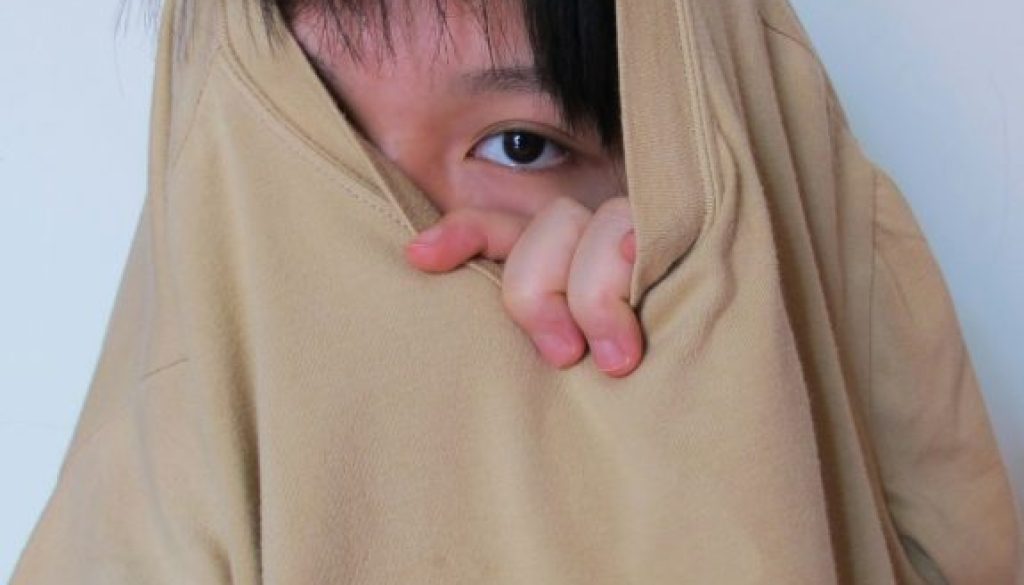Making the Invisible Visible: Honoring our Interfaith Families
Few things are as instructive as seeing Judaism through another’s eyes. When you’re a rabbi, you’re living in a paradox. You are supposed to be a communicator of Judaism, but more often than not, you find yourself surrounded by Jews. That’s part of the job, obviously, but it risks a chronic condition of ‘insider baseball’ where you become less exposed to the refreshing insights and new perspectives of others.
This is why I love talking to my personal trainer, Stan. Between the ab crunches and deadlifts and bench presses, he asks me about Judaism. I’m working up a sweat, and perhaps grunting a little (perhaps), and here he is, asking me about why Jewish men ‘wear those funny black boxes and straps on their arms and heads’ (I tell them women can wear tefillin too) and what Shabbat entails. Often, his outsider view of Judaism is colored by the media which is a depressing prospect. He either associates Judaism with the news (God forbid) or with lifestyle documentaries about wig-wearing ultra-Orthodox folks. It took him a while that the middle-aged blonde woman dressed in spandex leggings and crop top is just as an authentic representation of Judaism as what he sees on TV.
Today he asked me, ‘are Jews allowed to marry non-Jews?’ (I promise, I didn’t plan his question to coincide with our Interfaith Families Shabbat – the Lord works in mysterious ways!) I took a deep breath and prepared to open with the usual, ‘well some Jews do this, and some other Jews do that, and no-one ever agrees!’ After that disclaimer, I explained to him that yes, many Jews can and do marry non-Jews (or, to turn it around: many non-Jews can and do marry Jews!) and that, in fact, we were having an event to honor Interfaith Families at our synagogue tonight. ‘That is so nice!‘ he responded with unalloyed happiness as I had my grip locked around a barbell, lying on a bench. For Stan, there was no ‘baggage’, no ‘judgment’, no ‘associations’ with the idea of Jews and non-Jews blending families. All he saw was a picture of love, togetherness and mutual respect for diverse religious backgrounds.
Such experiences are instructive because they force us to pop our own bubbles and confront our own assumptions. Out-of-context encounters reveal to us the unknown; they help us see what was previously unseen, and from that, we can shift cultures and narratives to become more inclusive and affirming. However, in order to become more inclusive and affirming as a community, you need to see.
This week’s Parashah ostensibly is all about community and communal accountability. Parashat Bamidbar counts the tribal heads and their respective followings, so that the Jewish people themselves are counted. From this text comes an understanding that every person is precious and that paradoxically, by counting people, no-one can be made to feel like ‘just a number.’ The Torah gives us ancestral names and tribal lineages. But the Torah teaches as much through what it obscures as through what it demonstrates. The reality is that plenty of human beings are not visible in this portion.
First of all, women aren’t visible. In a patriarchal society, their tribal names do not carry through. Each of these male leaders surely has a wife to sire sons, but the wives and daughters are hidden from the text. Perhaps more significantly, non-Jews are hidden from the text. We know from the Book of Exodus that 1/5th of the people who came out of Egypt were Egyptian non-Jews, the ‘erev rav.’ 20% of the population is not accounted for and is not granted the same recognition and humanization as the named Israelites are. They are hidden, and in that lies a grave injustice.
‘So Moses recorded all the male first-born among the Israelites… all the first-born males are listed by name, recorded from the age of one moth up, came to 22,273.’ (Num. 3:43-44). This verse seems so innocuous that there are no commentaries on it, not even Rashi or Ibn Ezra. Talking about a blind spot.
The reality is, can you imagine you’re part of the ‘erev rav’, the mixed multitude that came out of Egypt, and you witness this process? You cast your lot with the Israelites, you suffered with the Israelites, you trudged through the desert with the Israelites and witnessed the giving of the Torah with the Israelites. You helped pitch the tents and collect the manna, you experienced parched throats and pangs of hunger, and you beheld miracles and wonders and God’s presence among the people. You tended to the sick and birthed children, you loved and mourned and quibbled and worked among the Israelites. And yet… the text is completely silent about you. You are not accounted for. It is hurtful, it is wrong and it is a false representation of the rich diversity of our community, even today as it was then.
Here are the facts: 70% of non-Orthodox Jews are intermarried. This means that our lives are intimately and beautifully woven together. While the discourse on intermarriage has improved leaps and bounds these last few decades, we still have a long way to go. Our Interfaith Family initiative at the synagogue seeks to address this in our own small way. We want to commit to making Agudas Achim not just an open and welcoming space for our non-Jewish loved ones and friends, but we want to make it a co-creative and shared space for our non-Jewish loved ones and friends. Our destinies are bound together. Intermarriage is not the bad luck of having a Jew marry out; rather, it is having the rich blessing of a non-Jew marrying in. Our people is greater, both numerically, spiritually and culturally, for it. We want to commit to honoring this and building a home for Jews and non-Jews alike, just like in the days of Moses.
I will end on a personal note. Even rabbis are members of interfaith families. My husband and I are both Jewish, sure, but our extended families are not. I too, navigate December dilemma’s, cultural differences and kashrut mishaps. I, too, say Kaddish for non-Jewish loved ones with the same fervor and devotion that I would for a Jewish loved one. I, too, walk the line between Jewish civilization and the rest of humanity. I, too, want my non-Jewish family to feel welcome of these walls. This journey is a rabbinic one but also a personal one. And what we can do is change one heart, one experience, at a time. The gym is not a bad place to start; but our work will continue right here.
I hope and pray that you will join us in making it so.




